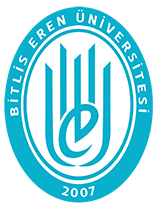Detection of Lung Cancer Cells Using Deep Learning Methods
Abstract
Abstract Lung cancer stands out as a high mortality, fatal disease worldwide. Early diagnosis is crucial for effective treatment of this disease; however, treatment options can be limited when it is often diagnosed in advanced stages. This study examines the role of artificial intelligence (AI) techniques in early diagnosis of lung cancer and emphasizes the advantages it provides. Particularly, the ability of deep learning algorithms to extract meaningful features from complex datasets indicates significant potential for detecting early stages of lung cancer. In this context, it is anticipated that AI-supported diagnostic systems have the potential to significantly improve lung cancer diagnostic methods by reducing the workload of radiologists and increasing accuracy rates. In this study, a total of 6 datasets were obtained by applying Gabor filter and Histogram Equalization+CLAHE filter to original datasets. The results obtained in the diagnosis of lung cancer using Convolutional Neural Networks (CNN) and YOLO algorithms are evaluated in two different categories. One of these categories is the investigation of the effect of image preprocessing methods. The other is the investigation of the effect of dataset partitioning into training, testing, and validation on success. According to the results obtained, the highest success rate in terms of F1 Score for the CNN model was achieved in both dataset partitioning (70%20%-10% and 60%-20%-20%) with the datasets subjected to Histogram Equalization+CLAHE filter. It was obtained as 99%. For the YOLO model, the highest success rate was determined as 96% F1 Score with the same preprocessing technique and dataset partition. The effect of image preprocessing and dataset partitioning on success is not as high in the YOLO model as it is in the CNN model.
Collections

DSpace@BEU by Bitlis Eren University Institutional Repository is licensed under a Creative Commons Attribution-NonCommercial-NoDerivs 4.0 Unported License..













